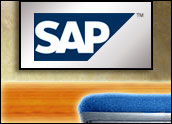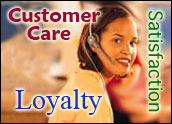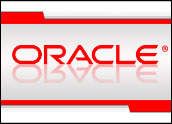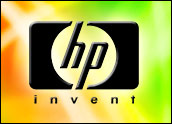
The on-demand CRM market has been growing steadily in the past year, with challenges arising to Salesforce.com’s dominant position, or as Nucleus Research put it in a May 2005 paper, “On-demand CRM is growing up.”
Industry giant Microsoft added a host of new tools to its CRM offering with its 3.0 release in July. Other market players include Siebel — which is in the process of being acquired by Oracle — SAP, RightNow Technologies and NetSuite.
Salesnet.com is planning a major update in February. CRM Buyer talked to Salesnet.com President Jonathan Tang about the market and its future.
CRM Buyer: What do you see as Salesnet’s biggest selling point?
Jonathan Tang: When we started the company in ’97, the first thing we did before we wrote a single line of code was, we went to companies and asked them what made them successful. Through that, we discovered that it was process. Without clearly defined processes, they were in the dark. If you go by the rule of thumb that the top 20 percent of performers bring in 80 percent of the money, we thought, “Gee, if we could leverage best practices of top performers down to the rest who want to sell but don’t know how, we could see a real bump in productivity.” Our goal is to increase effectiveness through process automation.
Why is that important? Process brings discipline, discipline brings predictability, and predictability is something companies can manage to. Sometimes, companies buy automation, but they have bad process. Then they’re just automating bad process and that doesn’t help. What we bring to the table is that we can help companies define the best practice selling process, automate it and have tools to measure and refine it. We call it GPS: guided performance selling.
Salesnet provides opportunity management. For example, let’s say your major milestone is an initial cold call. Several things could happen. You could get voice mail, have someone say they’re not interested now but call back in six months, or tell you not to call again. Our system will plot a course based on those responses. For underperformers, the system becomes a virtual coach. For top performers, it becomes more of a virtual assistant.
CRM Buyer: No one else does that?
JT: No one else does it to the same extent.
CRM Buyer: Can any sales organization benefit from some type of CRM product?
JT: Where we’re strong is in business-to-business sales. That’s where we feel process is more key to success. Less so in business-to-consumer transactional sales, although some may disagree. The system works best in consultative selling situations.
CRM Buyer: What are the toughest circumstances in which to implement CRM?
JT: For us, the types of companies that we would consider “tribal” … where the elder generation founded the company, have sold the product for years and have a big Rolodex, but there’s no real process. Those type of companies don’t understand the benefit of process. Companies that use a process and understand process, those types of companies are very good at understanding the benefit of CRM.
There are companies out there who think they don’t have a process — they do, but it’s not in a workbook, it’s in someone’s head. Then it’s our job to get it out of their heads and help them define it and automate it. It’s changing people’s behaviors.
CRM Buyer: What about getting people to use the new system?
JT: It’s not easy to get people to use something new and different. Even with processes, the cultural change is a challenge. For those companies, you manage by stick or carrot. You either incentivize employees to use the system or let the system prove itself. In most situations, companies are managing by stick. If you don’t make your quota, you don’t get your commission.
CRM Buyer: It gets back to being a kid. We never outgrow the need for reward and punishment.
JT: It gets back to discipline. Once it becomes a discipline, it’s second nature and you don’t have to think about it — you just do it. That’s why it’s so important that you have buy-in from everyone — from the CEO all the way down. It’s not just new technology, it’s a marriage between technology and a way of doing business. You need to have cultural change and support from every level. If that’s not there, then you’re going to have a long road.
CRM Buyer: How do you get that support?
JT: It starts with the decision process. A lot of companies have committees, so everyone has a say. Then you have to follow through. You should get everyone involved in the planning process. From there you need to do the type of training necessary for each group. A day of general training isn’t good enough. You need custom training for each group based on “What’s in it for me?” End-users need to get training on “How will the system make money for me? How do I use the workflow to manage more accounts, close deals, etc.”
CRM Buyer: What should companies know before they get started? How long will it take? How much will it cost?
JT: We start to ask them discovery questions early on. That brings requirements of what they’re trying to do out into the open. Are they just trying to manage leads or looking for a process where management can monitor everything? From that we can develop a proof of concept easily. We can say, “Yes we can” or “No we can’t” and shake hands right there.
It’s easy to say early on what it will cost and how long it will take. Companies are unique in what they need and how many processes, how many divisions will be using the system, and that determines length of time, resources, etc., that it will take. But companies usually want a number. I give an average range within US$500 and $700 per user of upfront investment. If it gets more complicated, such as if there’s a lot of data integration or data imports, that will extend cost and length of implementation. If you have about 30 users in the sales and marketing system, that type of implementation would take about a month from discovery to training. In the old days, Siebel or SAP would come in and it would take a year. Time to market is a very key decision point for companies today.
CRM Buyer: Is ERP necessary for CRM?
JT: You don’t need any technology to go into CRM. It’s more a willingness to go in because it will affect your entire organization. Companies don’t need an ERP system, although my guess is that most companies will have a back end in place before they select a CRM product. They want to keep track of inventory and money flow first. The next step is to manage sales, then marketing, lastly the support-side of the house.
CRM Buyer: What’s the future of CRM?
JT: What I see is a change in the delivery model — the on-demand space in a period of hypergrowth. That will continue for the next three to five years. The competition we’re seeing is no longer client-server, but just other on-demand services. That’s a change in the past 12 months or so. I don’t see the Siebels and SAPs in our competitive landscape. But that will change. There will be some consolidation because vendors will need to offer both on-demand and client-server solutions. For instance, Salesforce’s App Exchange is a great idea — it provides different options. At $125 per user per month that’s good, but when you tack on more services, companies will realize that cost will be prohibitive. When they look at their TCO (total cost of ownership) over three to five years, people will realize they would have saved by buying. At some point, there will be a settling down in how much market share each will get.
CRM Buyer: What else should we know about CRM or Salesnet?
JT: We have a major upgrade coming up in February. We’re essentially giving away new features to customers because it’s part of their monthly fee. We think it’s Salesnet’s time now. We’ve been around since the beginning, we’ve been lying low, but you’re going to start to see more of us. We’ve done it through organic growth and happy customers. We continue to focus on customers. We’re a private company (Salesforce went public June, 23, 2004), and stock prices don’t mean anything. We’re going to continue be customer-focused.
CRM Buyer: What is the upgrade trying to accomplish?
JT: We want to move past just the selling process and automation to expand and widen our footprint to the whole CRM suite. We’ve had a tremendously successful campaign against Salesforce. Internally we call it the “No Bull” campaign. What we’ve started experiencing since last summer is a general frustration with Salesforce. Is Salesforce becoming a victim of their own success? I think they are. In many ways our strategy is to point that out. We can offer a better level of service, and make sure your needs are being met.






















































